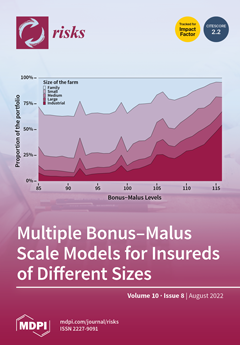This research aims to develop a determinant variable of the
Sukuk rating derived from agency and asymmetry theories. This research is essential because
Sukuk or Islamic Bonds is needed in Indonesia, with 85% of its population out of 320 million people being Muslim.
[...] Read more.
This research aims to develop a determinant variable of the
Sukuk rating derived from agency and asymmetry theories. This research is essential because
Sukuk or Islamic Bonds is needed in Indonesia, with 85% of its population out of 320 million people being Muslim. Many studies on the determinants of
Sukuk ratings have been conducted and are still trending research. However, they are rarely observed from the perspective of agency and asymmetry theories, which are the basis for the relationship between principals and investors. The relationship produces three primary variables in the
Sukuk rating determinants, namely financial disclosure quality (FDQ), accounting-based risks (ABRs), and earnings management (EM). This research used 570 panel annual reports from 2018 to 2020 and involved 190 firm-issued
Sukuk. Meanwhile, the variables’ reflection used several indicators. SEM (structural equation modeling) was used for the statistical analysis with the help of PLS—primarily smart PLS version. The results exposed that FDQ, ABRs, and EM derived from the two theories are affected significantly by the determinant of the
Sukuk rating. In comparison, earnings management successfully moderates the FDQ and
Sukuk rating variables but fails to moderate the ABRs to the
Sukuk rating. The conclusion also revealed that these relationship theories are fundamental in developing the
Sukuk rating. However, the variables should be more complex for future research. With significant results, the agency and asymmetry theories proxied by three variables can explain the
Sukuk rating. Accordingly, these theories are relevant as approaches in determining important factors of the
Sukuk rating.
Full article


